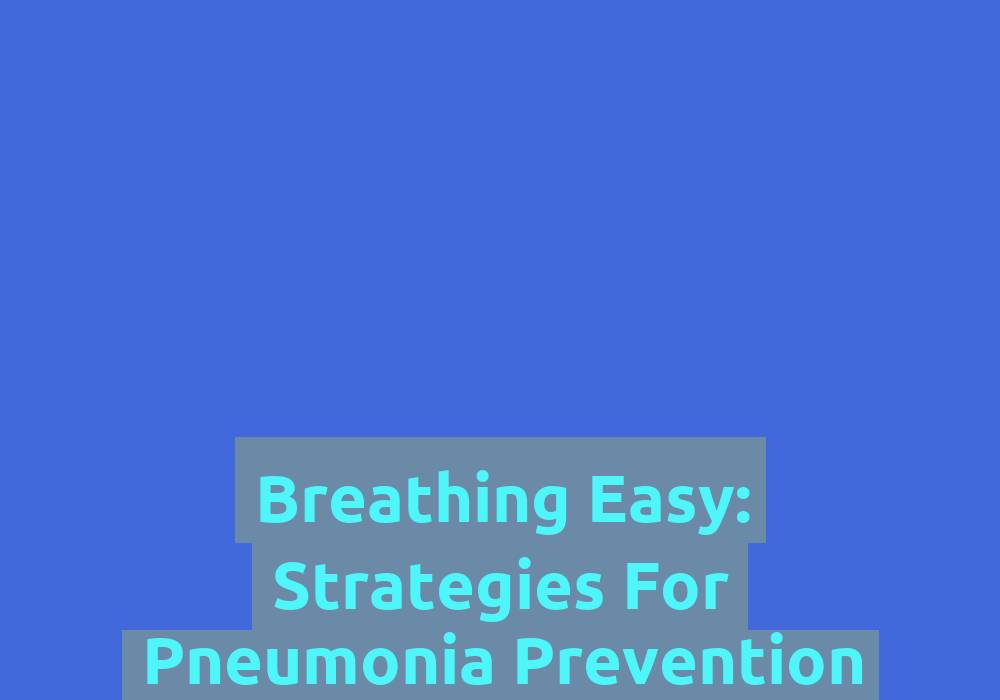Breast Cancer Screenings: The Shield Every Woman Should Arm Herself With

Breast cancer is a prevalent and life-threatening disease that affects women worldwide. To combat this disease effectively, it is crucial for women to arm themselves with knowledge and take proactive steps towards early detection and prevention. Breast cancer screenings play a vital role in this battle, serving as a shield that every woman should equip herself with. In this article, we will delve into the importance of breast cancer screenings, the various screening methods available, and why every woman should prioritize regular screenings.
Why Breast Cancer Screenings Matter
Breast cancer screenings are designed to detect any signs of breast cancer before noticeable symptoms appear. Early detection provides a better chance of successful treatment and significantly improves the chances of survival. By proactively scheduling regular screenings, women can ensure that any potential abnormalities or cancerous cells are identified at the earliest stage possible, allowing for timely medical intervention.
Regular breast cancer screenings offer several important benefits:
-
Increased Survival Rates: Detecting breast cancer at an early stage significantly improves the chances of successful treatment and survival. Regular screenings provide the opportunity to catch the disease before it progresses to an advanced stage, when treatment options may be limited.
-
Less Invasive Treatment Options: When breast cancer is detected early, less invasive treatment options, such as lumpectomy or targeted therapy, may be available. These options preserve breast tissue and minimize the potential impact on a woman’s physical appearance and overall quality of life.
-
Reduced Treatment Costs: Early detection and intervention often result in less aggressive and costly treatments. By identifying breast cancer at an early stage, women may avoid the need for extensive surgeries, chemotherapy, or radiation therapy, which can be financially burdensome.
-
Emotional Well-being: Regular screenings provide peace of mind and reduce anxiety associated with the uncertainty of undetected cancer. By taking proactive steps towards their health, women can feel empowered and confident in their efforts to prioritize their well-being.
Different Types of Breast Cancer Screenings
There are several effective screening methods available to detect breast cancer. Let’s explore some of the most commonly utilized methods:
1. Mammogram
A mammogram is an X-ray examination of the breast that can identify abnormalities such as lumps or tumors. It is considered the gold standard for breast cancer screenings, offering high accuracy in detecting early-stage cancers. Women aged 40 and above are recommended to undergo annual mammograms as part of their routine screening protocol.
Mammograms are an essential tool in breast cancer detection due to their ability to:
- Detect Tumors Early: Mammograms can identify tumors before they can be felt or cause symptoms, enabling early intervention and treatment.
- Screen for Microcalcifications: Microcalcifications are tiny calcium deposits that can indicate the presence of early-stage breast cancer. Mammograms can detect these microcalcifications, aiding in early diagnosis.
- Monitor Changes Over Time: By comparing mammogram results from previous years, healthcare professionals can identify any changes or abnormalities in breast tissue, providing valuable insights into a woman’s breast health.
2. Clinical Breast Examination (CBE)
A clinical breast examination involves a physical examination of the breasts performed by a healthcare professional. During this examination, the healthcare provider checks for any lumps, changes in breast size or shape, or other irregularities. CBEs are typically recommended every three years for women in their 20s and 30s and annually for women aged 40 and above.
Clinical breast examinations offer the following advantages:
- Complement to Mammography: CBEs can detect abnormalities that may not be visible on mammograms, such as changes in breast texture or nipple discharge.
- Enhanced Personalized Examination: Healthcare professionals can tailor the examination based on an individual’s specific risk factors and medical history, providing a more personalized approach to breast health evaluation.
- Opportunity for Education: During a CBE, healthcare professionals can educate women about breast self-examinations, risk factors, and lifestyle modifications that promote breast health.
3. Breast Self-Examination (BSE)
Breast self-examinations are simple, yet important, techniques that women can perform on themselves to detect any changes or abnormalities in their breasts. By regularly examining their breasts, women become familiar with how their breasts normally look and feel, making it easier to identify any new developments or changes. Although BSEs are no longer recommended as a standalone screening method, they still serve as a valuable tool for women to monitor their breast health.
While no longer the primary method of detection, breast self-examinations provide the following benefits:
- Promote Breast Awareness: BSEs encourage women to be proactive in monitoring their own breast health and recognizing any changes that may require medical attention.
- Familiarity with Breast Tissue: Regular self-examinations help women become familiar with the normal texture, size, and shape of their breasts, enabling them to detect any deviations from their baseline.
- Early Warning Signs: By performing BSEs, women may identify warning signs such as lumps, skin changes, or nipple abnormalities that require further evaluation by a healthcare professional.
4. Breast MRI
Breast magnetic resonance imaging (MRI) is a screening method that uses powerful magnets and radio waves to generate detailed images of the breast. It is often recommended for women with a higher risk of breast cancer, such as those with a family history of the disease or carriers of certain genetic mutations. Breast MRI is typically used in conjunction with mammography for a more comprehensive screening approach.
Breast MRI offers specific advantages for high-risk individuals:
- Increased Sensitivity: Breast MRI is highly sensitive in detecting breast abnormalities, especially in women with dense breast tissue where mammograms may be less effective.
- Detection of Multiple Tumors: MRI can identify multiple tumors in different areas of the breast, providing a more comprehensive assessment of the extent of the disease.
- Supplemental Screening: For women at higher risk, breast MRI can be used as a supplemental screening tool in addition to mammography, enhancing the chances of early detection.
The Importance of Regular Screenings
Now that we have discussed the various breast cancer screening methods, it is crucial to emphasize the significance of regular screenings. Here are some key reasons why every woman should prioritize regular screenings:
1. Early Detection
Regular screenings increase the likelihood of detecting breast cancer in its early stages when it is most treatable. By identifying cancer at an early stage, treatment options are more effective, and the chances of survival are significantly improved. Don’t wait for symptoms to arise – be proactive and schedule regular screenings.
Early detection through regular screenings offers the following advantages:
- Improved Treatment Outcomes: Detecting breast cancer early allows for less aggressive treatment options, minimizing the impact on a woman’s overall health and well-being.
- Reduced Morbidity and Mortality: Early-stage breast cancer has a higher chance of successful treatment and improved long-term survival rates.
- Potential for Less Invasive Surgeries: When breast cancer is detected early, women may have the option for breast-conserving surgeries, preserving their natural breast shape and reducing the need for extensive surgical procedures.
2. Peace of Mind
Regular breast cancer screenings provide women with peace of mind, knowing that they are taking proactive steps towards their health. By prioritizing screenings, women are actively engaging in their own well-being and reducing anxiety associated with the uncertainty of undetected cancer.
Benefits of peace of mind through regular screenings include:
- Empowerment: Regular screenings empower women to take control of their health by actively participating in their own early detection efforts.
- Reduction in Anxiety: By proactively monitoring their breast health, women can alleviate anxiety and worry associated with the possibility of undetected breast cancer.
- Confidence in Health Status: Regular screenings offer reassurance and confidence in a woman’s current breast health status, allowing her to focus on other aspects of her life.
3. Risk Assessment
Breast cancer screenings also allow healthcare professionals to assess an individual’s risk level and determine the appropriate screening protocol. By evaluating personal risk factors, such as family history or genetic mutations, healthcare providers can tailor a screening plan that suits each woman’s unique needs.
Benefits of risk assessment through breast cancer screenings include:
- Personalized Screening Plans: By understanding an individual’s risk factors, healthcare providers can design a screening schedule that aligns with their specific needs, ensuring optimal detection and preventive measures.
- Identification of High-Risk Individuals: Screenings help identify women at higher risk for breast cancer, enabling closer monitoring and potential early intervention.
- Genetic Counseling Referrals: For individuals with a family history of breast cancer or known genetic mutations, screenings may prompt referrals for genetic counseling, providing further insights into potential risk factors.
4. Education and Awareness
Breast cancer screenings serve as an opportunity for women to educate themselves about breast health and raise awareness about the importance of screenings among their peers. By sharing personal experiences and discussing the significance of early detection, women can empower each other and contribute to a culture of proactive breast health management.
Benefits of education and awareness through breast cancer screenings include:
- Empowerment and Knowledge: Regular screenings educate women about the importance of early detection and equip them with knowledge about preventive measures and lifestyle choices that promote breast health.
- Community Support: By openly discussing breast cancer screenings, women can create a supportive network that encourages others to prioritize their health and seek regular screenings.
- Advocacy and Prevention: Engaging in discussions about screenings can help promote breast cancer prevention strategies, encouraging others to take proactive steps towards their own breast health.
Conclusion
Breast cancer screenings are the shield every woman should arm herself with in the fight against breast cancer. By understanding the importance of regular screenings and familiarizing oneself with the available methods, women can take control of their breast health and increase the chances of early detection and successful treatment. Remember, early detection saves lives, so prioritize your health and schedule regular breast cancer screenings today!
Note: The complete article is provided below in markdown format.
“`
Breast cancer is one of the most prevalent forms of cancer among women worldwide. In order to combat this life-threatening disease, it is crucial for women to arm themselves with knowledge and take proactive steps towards early detection and prevention. Breast cancer screenings play a vital role in this battle, serving as a shield that every woman should equip herself with. In this article, we will delve into the importance of breast cancer screenings, the various screening methods available, and why every woman should prioritize regular screenings.
Why Breast Cancer Screenings Matter
Breast cancer screenings are designed to detect any signs of breast cancer before noticeable symptoms appear. Early detection provides a better chance of successful treatment and significantly improves the chances of survival. By proactively scheduling regular screenings, women can ensure that any potential abnormalities or cancerous cells are identified at the earliest stage possible, allowing for timely medical intervention.
Regular breast cancer screenings offer several important benefits:
-
Increased Survival Rates: Detecting breast cancer at an early stage significantly improves the chances of successful treatment and survival. Regular screenings provide the opportunity to catch the disease before it progresses to an advanced stage, when treatment options may be limited.
-
Less Invasive Treatment Options: When breast cancer is detected early, less invasive treatment options, such as lumpectomy or targeted therapy, may be available. These options preserve breast tissue and minimize the potential impact on a woman’s physical appearance and overall quality of life.
-
Reduced Treatment Costs: Early detection and intervention often result in less aggressive and costly treatments. By identifying breast cancer at an early stage, women may avoid the need for extensive surgeries, chemotherapy, or radiation therapy, which can be financially burdensome.
-
Emotional Well-being: Regular screenings provide peace of mind and reduce anxiety associated with the uncertainty of undetected cancer. By taking proactive steps towards their health, women can feel empowered and confident in their efforts to prioritize their well-being.
Different Types of Breast Cancer Screenings
There are several effective screening methods available to detect breast cancer. Let’s explore some of the most commonly utilized methods:
1. Mammogram
A mammogram is an X-ray examination of the breast that can identify abnormalities such as lumps or tumors. It is considered the gold standard for breast cancer screenings, offering high accuracy in detecting early-stage cancers. Women aged 40 and above are recommended to undergo annual mammograms as part of their routine screening protocol.
Mammograms are an essential tool in breast cancer detection due to their ability to:
- Detect Tumors Early: Mammograms can identify tumors before they can be felt or cause symptoms, enabling early intervention and treatment.
- Screen for Microcalcifications: Microcalcifications are tiny calcium deposits that can indicate the presence of early-stage breast cancer. Mammograms can detect these microcalcifications, aiding in early diagnosis.
- Monitor Changes Over Time: By comparing mammogram results from previous years, healthcare professionals can identify any changes or abnormalities in breast tissue, providing valuable insights into a woman’s breast health.
2. Clinical Breast Examination (CBE)
A clinical breast examination involves a physical examination of the breasts performed by a healthcare professional. During this examination, the healthcare provider checks for any lumps, changes in breast size or shape, or other irregularities. CBEs are typically recommended every three years for women in their 20s and 30s and annually for women aged 40 and above.
Clinical breast examinations offer the following advantages:
- Complement to Mammography: CBEs can detect abnormalities that may not be visible on mammograms, such as changes in breast texture or nipple discharge.
- Enhanced Personalized Examination: Healthcare professionals can tailor the examination based on an individual’s specific risk factors and medical history, providing a more personalized approach to breast health evaluation.
- Opportunity for Education: During a CBE, healthcare professionals can educate women about breast self-examinations, risk factors, and lifestyle modifications that promote breast health.
3. Breast Self-Examination (BSE)
Breast self-examinations are simple, yet important, techniques that women can perform on themselves to detect any changes or abnormalities in their breasts. By regularly examining their breasts, women become familiar with how their breasts normally look and feel, making it easier to identify any new developments or changes. Although BSEs are no longer recommended as a standalone screening method, they still serve as a valuable tool for women to monitor their breast health.
While no longer the primary method of detection, breast self-examinations provide the following benefits:
- Promote Breast Awareness: BSEs encourage women to
be proactive in monitoring their own breast health and recognizing any changes that may require medical attention.
- Familiarity with Breast Tissue: Regular self-examinations help women become familiar with the normal texture, size, and shape of their breasts, enabling them to detect any deviations from their baseline.
- Early Warning Signs: By performing BSEs, women may identify warning signs such as lumps, skin changes, or nipple abnormalities that require further evaluation by a healthcare professional.
4. Breast MRI
Breast magnetic resonance imaging (MRI) is a screening method that uses powerful magnets and radio waves to generate detailed images of the breast. It is often recommended for women with a higher risk of breast cancer, such as those with a family history of the disease or carriers of certain genetic mutations. Breast MRI is typically used in conjunction with mammography for a more comprehensive screening approach.
Breast MRI offers specific advantages for high-risk individuals:
- Increased Sensitivity: Breast MRI is highly sensitive in detecting breast abnormalities, especially in women with dense breast tissue where mammograms may be less effective.
- Detection of Multiple Tumors: MRI can identify multiple tumors in different areas of the breast, providing a more comprehensive assessment of the extent of the disease.
- Supplemental Screening: For women at higher risk, breast MRI can be used as a supplemental screening tool in addition to mammography, enhancing the chances of early detection.
The Importance of Regular Screenings
Now that we have discussed the various breast cancer screening methods, it is crucial to emphasize the significance of regular screenings. Here are some key reasons why every woman should prioritize regular screenings:
1. Early Detection
Regular screenings increase the likelihood of detecting breast cancer in its early stages when it is most treatable. By identifying cancer at an early stage, treatment options are more effective, and the chances of survival are significantly improved. Don’t wait for symptoms to arise – be proactive and schedule regular screenings.
Early detection through regular screenings offers the following advantages:
- Improved Treatment Outcomes: Detecting breast cancer early allows for less aggressive treatment options, minimizing the impact on a woman’s overall health and well-being.
- Reduced Morbidity and Mortality: Early-stage breast cancer has a higher chance of successful treatment and improved long-term survival rates.
- Potential for Less Invasive Surgeries: When breast cancer is detected early, women may have the option for breast-conserving surgeries, preserving their natural breast shape and reducing the need for extensive surgical procedures.
2. Peace of Mind
Regular breast cancer screenings provide women with peace of mind, knowing that they are taking proactive steps towards their health. By prioritizing screenings, women are actively engaging in their own well-being and reducing anxiety associated with the uncertainty of undetected cancer.
Benefits of peace of mind through regular screenings include:
- Empowerment: Regular screenings empower women to take control of their health by actively participating in their own early detection efforts.
- Reduction in Anxiety: By proactively monitoring their breast health, women can alleviate anxiety and worry associated with the possibility of undetected breast cancer.
- Confidence in Health Status: Regular screenings offer reassurance and confidence in a woman’s current breast health status, allowing her to focus on other aspects of her life.
3. Risk Assessment
Breast cancer screenings also allow healthcare professionals to assess an individual’s risk level and determine the appropriate screening protocol. By evaluating personal risk factors, such as family history or genetic mutations, healthcare providers can tailor a screening plan that suits each woman’s unique needs.
Benefits of risk assessment through breast cancer screenings include:
- Personalized Screening Plans: By understanding an individual’s risk factors, healthcare providers can design a screening schedule that aligns with their specific needs, ensuring optimal detection and preventive measures.
- Identification of High-Risk Individuals: Screenings help identify women at higher risk for breast cancer, enabling closer monitoring and potential early intervention.
- Genetic Counseling Referrals: For individuals with a family history of breast cancer or known genetic mutations, screenings may prompt referrals for genetic counseling, providing further insights into potential risk factors.
4. Education and Awareness
Breast cancer screenings serve as an opportunity for women to educate themselves about breast health and raise awareness about the importance of screenings among their peers. By sharing personal experiences and discussing the significance of early detection, women can empower each other and contribute to a culture of proactive breast health management.
Benefits of education and awareness through breast cancer screenings include:
- Empowerment and Knowledge: Regular screenings educate women about the importance of early detection and equip them with knowledge about preventive measures and lifestyle choices that promote breast health.
- Community Support: By openly discussing breast cancer screenings, women can create a supportive network that encourages others to prioritize their health and seek regular screenings.
- Advocacy and Prevention: Eng


















